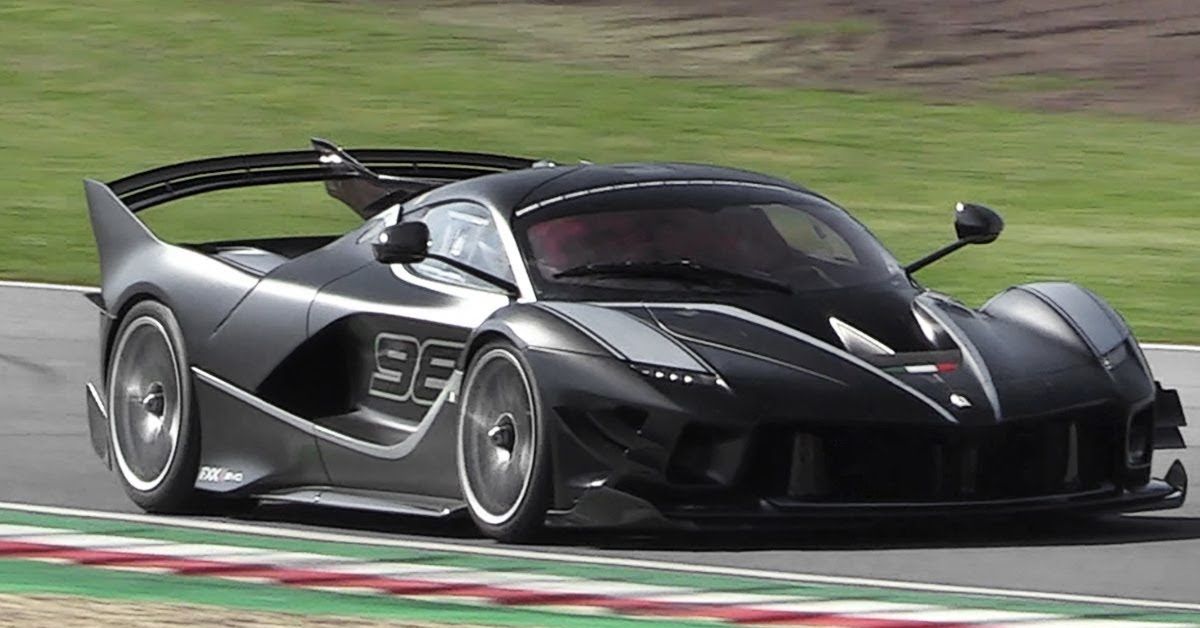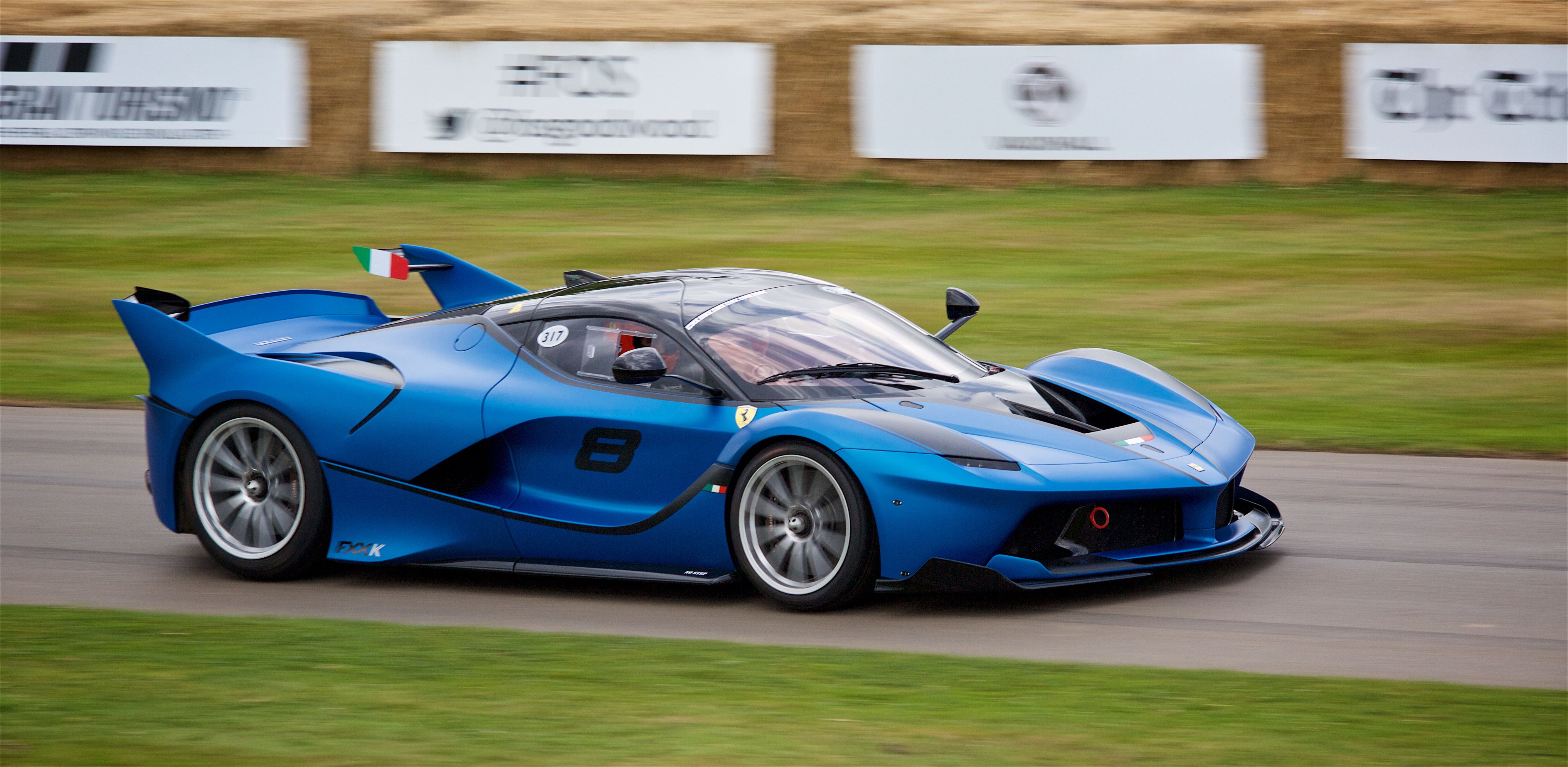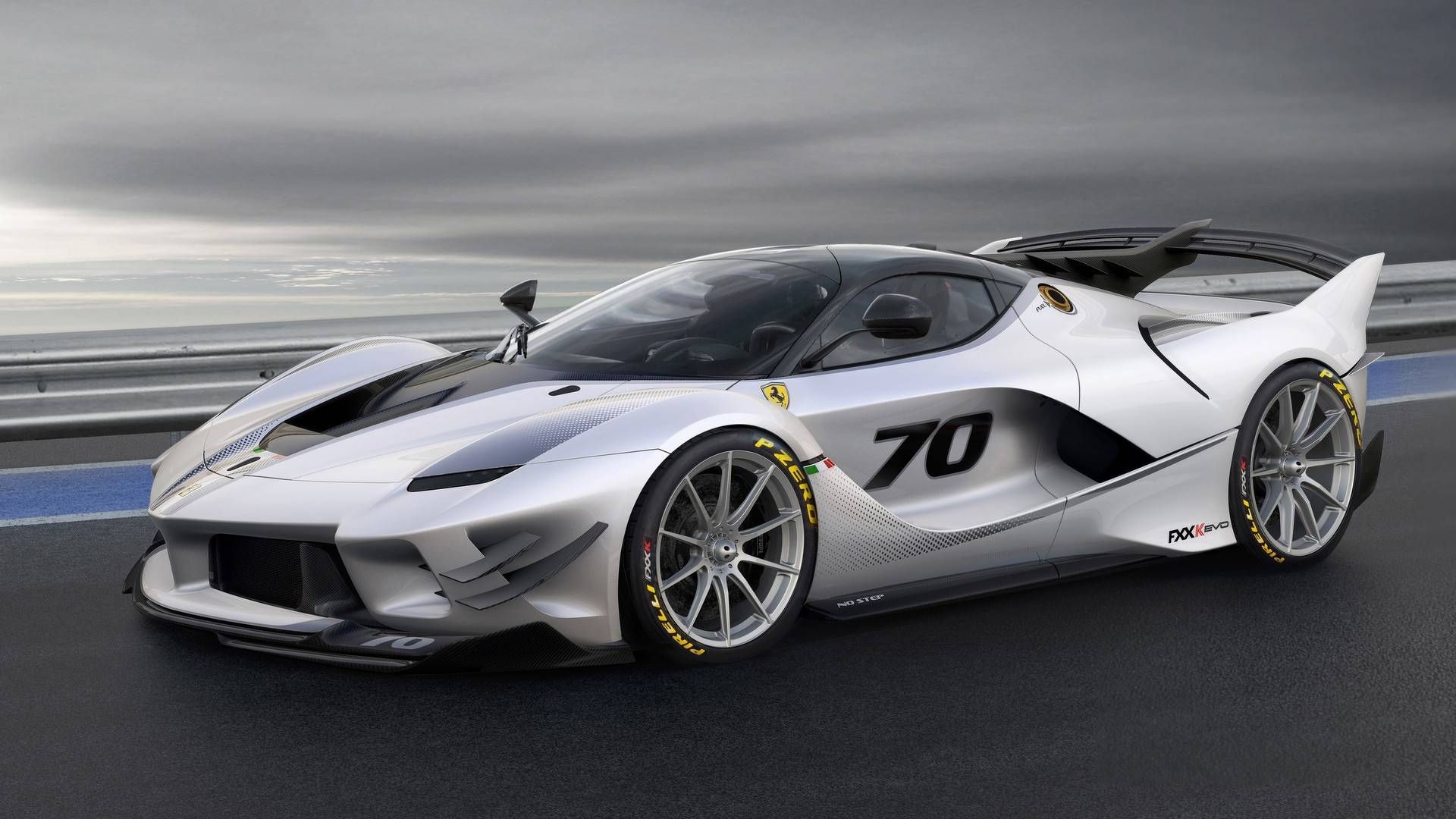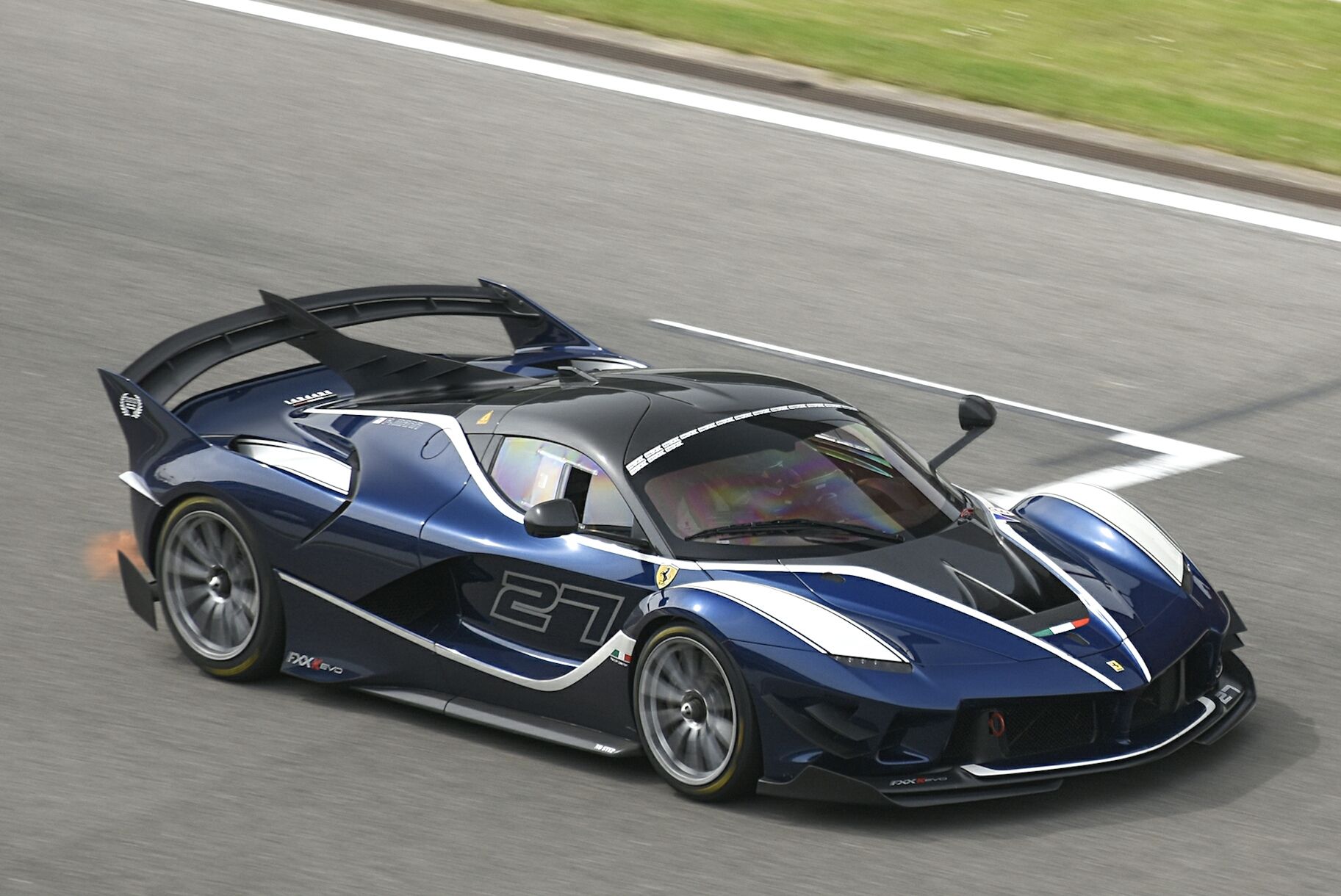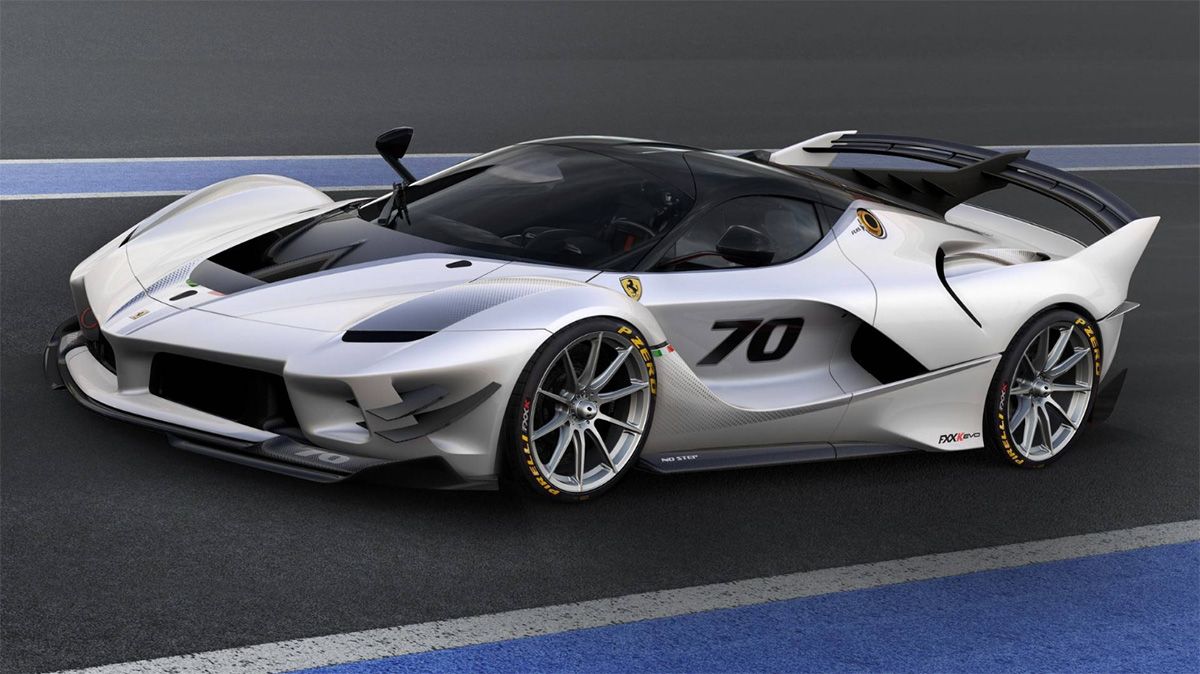The Ferrari FXX K Evo is a track-focused hypercar made by Ferrari, the next evolution its line after the LaFerrari and FXX K models. It was made in Maranello, Italy, and it was designed by Marco Fainello, Adrián Méndez, and architect Samuel Rodriguez. It was not made for street performance, and it has a mighty V12 engine that generates significant horsepower. The price tag for the Ferrari FXX K Evo is well over seven figures, and it generates an impressive amount of downforce.
Read on to find out more about the pricing, aspects, features, and history of the Ferrari FXX K Evo.
Is It Street Legal?
Generally speaking, the Ferrari FXX K Evo isn't street legal, as it was intended to be a track-focused hypercar. That said, sometimes sellers will convert the FXX K Evo to become street legal in order for it to be easier to sell. The Ferrari FXX K Evo was a very exclusive car, as only 40 were ever produced for members of Ferrari's XX client program. Its road-going counterpart is the hybrid LaFerrari, but the FXX-K compares to that as lighter, more powerful, and with a more extreme body.
The Ferrari FXX K Evo has a naturally-aspirated 6.3-Liter V12 engine that is capable of putting out 848 horsepower on its own. In addition, it has an electrical component that boosts its horsepower by 187, granting it a total of 1,036 horsepower. This makes the Ferrari FXX K Evo faster than any other vehicle that Ferrari has ever produced. At this point, no resale restrictions exist for the Ferrari FXX K Evo, so it can easily be either sold to a private collection or used in Ferrari's Corse Clienti race program.
$2.6 Million
The asking price for the Ferrari FXX K Evo is around $2.6 Million, which many drivers consider high by normal standards, and even higher given that it isn't street-legal for roads and can't be raced in any series. Further, Ferrari will only send it when the buyer is ready to drive it, and it remains with Ferrari until that point.
Ferrari deploys a whole team of engineers and technicians to track when the buyer claims to be ready. The buyer is also supposed to sign a promise agreement so the vehicle won't just be sitting around to be flipped as an investment. At this point, a used F1 car would be the only Ferrari more expensive for purchase.
124 MPH And Made For Speed
There were a lot of impressive specs about the Ferrari FXX K Evo, including mileage and top speed. As mentioned earlier, the engine is a 6.2-liter V12, and as with most Ferrari vehicles, it makes a distinctive sound.
Its downforce is significant, as the FXX K Evo generates 1410.96 pounds of downforce once it hits 124 MPH. At its maximum speed, it can generate more than 1829.94 pounds. That said, the Evo model has 23% more downforce than the standard FXX K model does.
The aforementioned engine generates 848 horsepower at 9,200 rpm, as well as 553 pound-feet of torque at 6,500 rpm. An additional electric motor channels 187 horsepower, so the combined result is 1,036 horsepower and 730 lb-ft of torque.
The Ferrari FXX K Evo also features house carbon-ceramic Brembo brakes and an F1 dual-clutch seven-speed gearbox for the brakes to receive power. Rear tires are 20-inch, while the front tires are 19-inch.
Compared to its LaFerrari base, the FXX K Evo features a new aerodynamic package and a revised suspension that oddly does not add extra weight to the vehicle.
It Had Predecessors
LaFerrari was not the FXX K Evo's only predecessor. Back in 2015, the non-Evo version of the FXX K debuted and it had enhanced aerodynamics.
Although the Evo has more downforce than the regular FXX K does, the amount of downforce it had was still groundbreaking at the time. Both the regular FXX K and the LaFerrari had similar designs to the Evo. Mainly aerodynamic designs, such as the downforce, are what changed the layout and structure of the Evo compared to its two predecessors. The Evo design also brings a solid wing to the rear, which its predecessors lacked, though the wing was not like wings on other race cars.
Further, the front end also underwent a redesign. The Evo had a front bumper with different geometry, as the surfaces beneath the headlamps would be hollowed out and the front wheels would have an extra intake placed ahead of them. This design of Evo would later be featured in the Fast & The Furious, but the model used in the actual filming was a fake vehicle constructed for design purposes, made to outwardly resemble the real Evo.
Sources: carbuzz.com, robbreport.com, motor1.com, topgear.com, topspeed.com,

